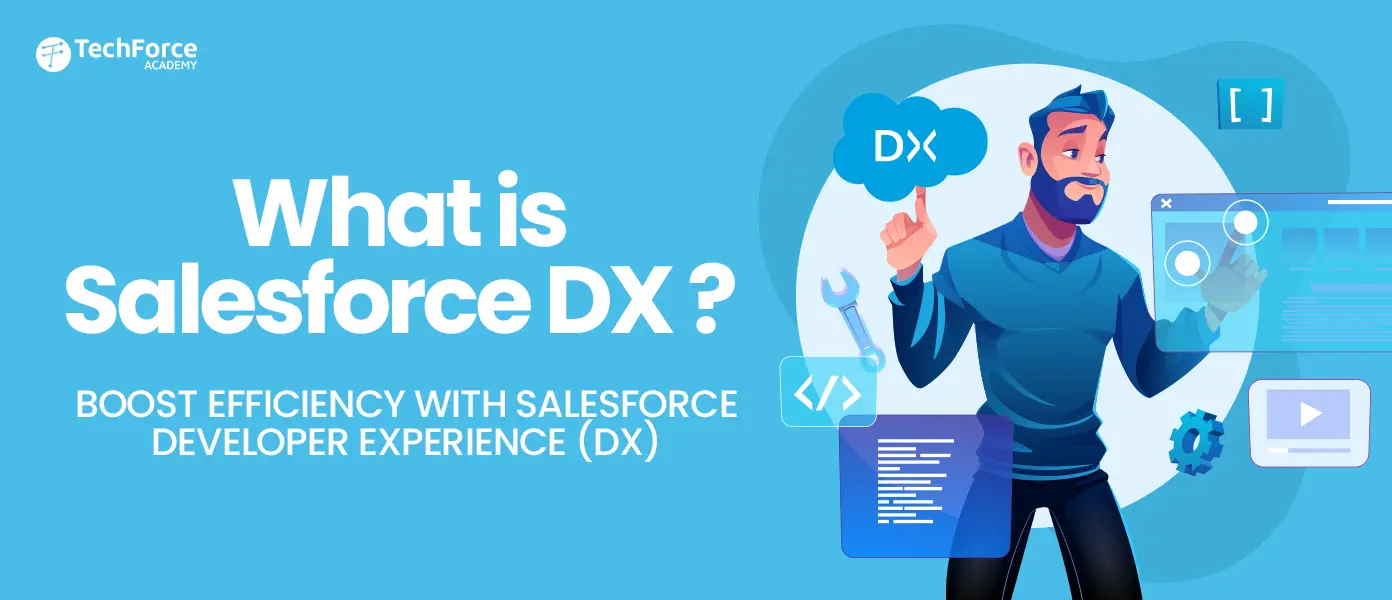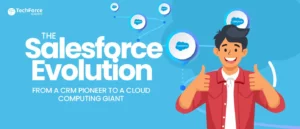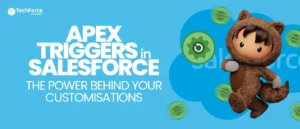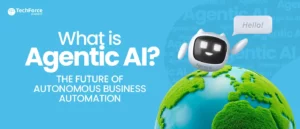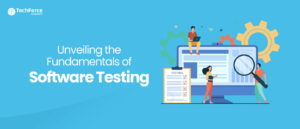Salesforce DX was developed to improve the experience of professional code developers working within the Salesforce platform. By 2018, it was clear that the platform’s original “clicks not code” design, while empowering for low-code/no-code developers, was not ideal for pro-code development workflows.
In 2018, Salesforce launched a new developer experience (DX). The goal was to build a simple, open, integrated, and collaborative environment that fostered teamwork and continuous delivery among developers.
Before SFDX was introduced, Salesforce orgs were generally configured, and Apex and Visualforce code was developed, using either the Force.com Integrated Development Environment (IDE) or the Developer Console’s online IDE.
What is Salesforce DX (Salesforce Developer Experience)?
Salesforce DX is a set of tools that improve the developer experience on the Salesforce platform. It facilitates agile development practices, automated testing, continuous integration, and streamlined release cycles through features like the Salesforce CLI, scratch orgs, and second-generation packaging.
By enabling version control, DX Salesforce shifts the development focus from org-centric to package-centric development, promoting more efficient and collaborative workflows.
Also read: Essential Salesforce Developer Skills in 2025?
What Are the Benefits of Salesforce DX?

1. Enhanced Collaboration and Flexibility
DX Salesforce offers a flexible and collaborative environment that fosters teamwork and streamlines the software development process on the Salesforce Platform.
2. Optimised for Agile Environments
Perfectly suited for Agile development environments that are fast-paced and high-performing.
3. Comprehensive SDLC Support
Provides support for a complete and integrated software development lifecycle (SDLC) for both individuals and teams.
4. Source Control as the Single Source of Truth
Version control systems, such as Git, are used to maintain a single source of truth. This is achieved by implementing a source-driven, package-based development model.
5. Improved Code Integrity Through Version Control
Version control enhances code integrity by tracking changes and improving visibility throughout the development process.
6. Accelerated Development with DevOps
SFDC DX enables accelerated development and improved product quality through the adoption of a DevOps approach.
7. Time-Saving Automated Testing
Facilitates automated testing, leading to significant time savings and a streamlined testing process.
8. Streamlined Releases with CI/CD
Streamlines releases using continuous integration and continuous delivery (CI/CD), enabling more frequent deployments.
9. CLI-Centric Metadata Management
Employs a source-driven, command-line interface (CLI) approach to manage metadata and distribute applications.
10. Automated SDLC Management
The software development lifecycle (SDLC) can be managed and automated end-to-end.
11. Dependency Management with API
Manages metadata dependencies through a dependency API.
12. Reduced Coding Errors Through Component Visibility
Coding errors are reduced by revealing component references through API queries, which simplifies development and increases component visibility.
Enrol in our Salesforce Platform Developer 1 Training with Salesforce AI and gain in-depth knowledge of Salesforce development.
Also read: Salesforce PD1 exam guide and improve your knowledge.
Salesforce DX Tools and Features
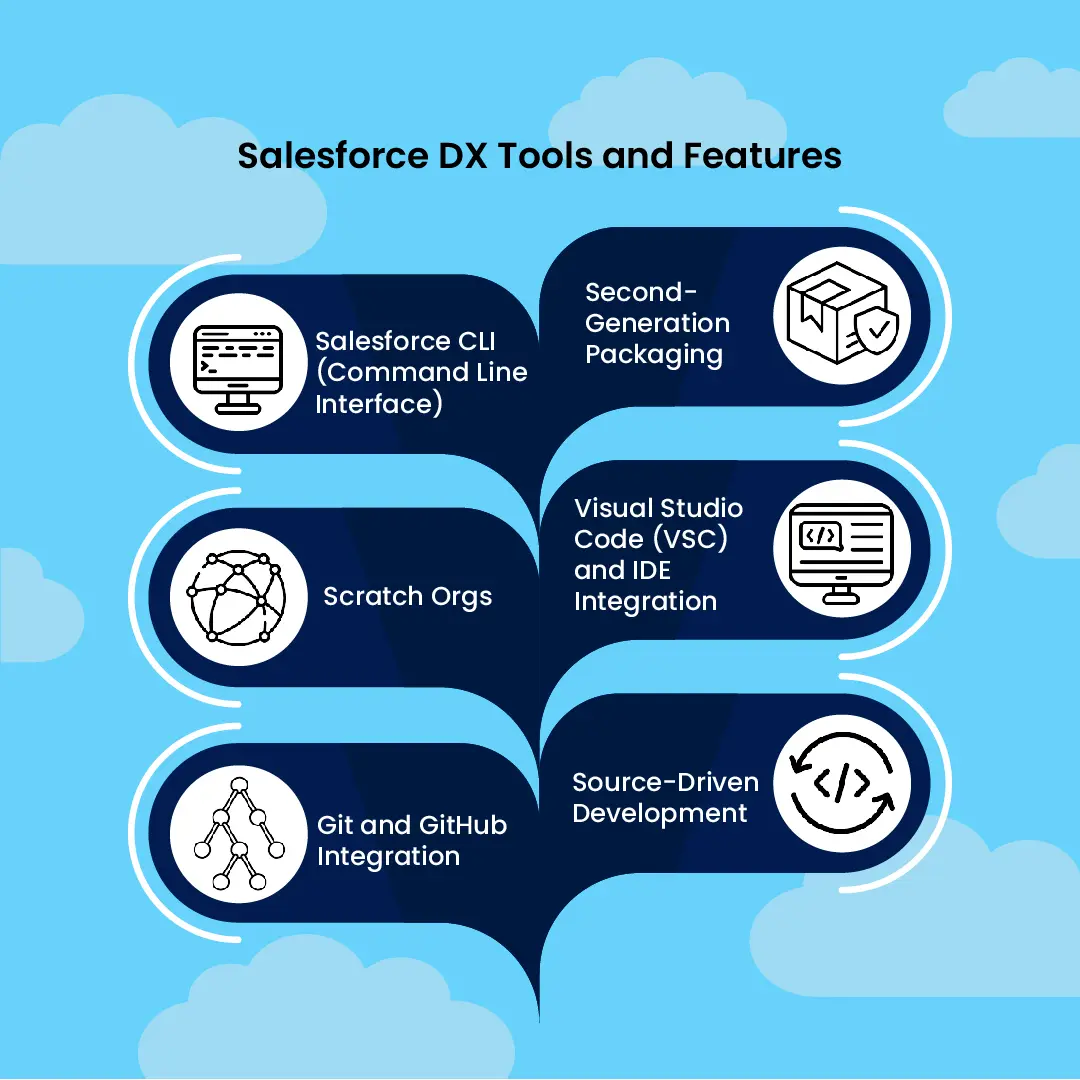
Salesforce CLI (Command Line Interface)
- A key tool of SFDX Salesforce, and a command-line interface built on Node.js.
- Uses a text-based interface for developers to run scripts, create directories, and build source-driven applications or integrations.
- The SFDX CLI is crucial for authorising orgs, deploying metadata, running tests, and enabling various SFDC DX workflows.
- It’s used for local interactions, CI/CD processes, and can be customised with plugins, streamlining Salesforce deployments across clouds.
- It is also used by automation tools to enable CI/CD processes.
- Key SF commands include pushing and pulling code, creating scratch orgs, and viewing push status.
Scratch Orgs
- A scratch org is a temporary, disposable Salesforce environment with a maximum lifespan of 30 days.
- It is source-driven and specifically designed for development and unit testing.
- Can be created and deleted as needed, allowing developers to start from scratch with a fresh org.
- To create and manage scratch orgs, developers must enable a permanent org as a Dev Hub.
- You can use them to quickly test changes in a production-like setting without affecting actual data or users.
- Changes within scratch orgs are not saved back to local source code, allowing risk-free experimentation.
Git and GitHub Integration
- DX uses GitHub, a Salesforce Version Control System (VCS), to maintain a single source of truth.
- GitHub hosts Git repositories for version control, promoting transparency and code integrity.
- Streamlines the Software Development Life Cycle (SDLC) by simplifying code application and testing collaboration.
- GitHub’s CI/CD integrations accelerate development and minimise manual testing.
- These integrations enable automated testing, building, and deployment of software projects.
Second-Generation Packaging
- AppExchange allows developers to distribute apps by packaging Salesforce components and hosting them on the platform.
- Salesforce components and metadata can be bundled into logical units using packaging.
- Packaging prevents an unstructured and difficult-to-manage organisation.
- Second Generation Packaging (2GP) supports unlocked packages created in a Dev Hub for source-driven development.
- 2GP packages can be installed in Scratch Orgs, Salesforce Sandboxes, and Developer Edition Orgs.
- Version control acts as the single source of truth for packaged apps.
- 2GP’s source-driven approach uses a Salesforce version control system, unlike 1GP’s reliance on deployed metadata.
Visual Studio Code (VSC) and IDE Integration
- Salesforce extensions for VSC enable developers to work with DX tools directly within the IDE.
- Visual Studio Code (VS Code) is a lightweight, extensible IDE that is ideal for working with DX.
- VS Code provides developers with a user-friendly environment, including a code editor, build automation tools, a debugger, and intelligent code completion.
- VS Code’s open APIs allow for seamless integration with DX.
- The Salesforce Extension Pack equips developers with necessary tools for building on the Salesforce Platform within the VS Code editor.
- Salesforce Developer Experience’s improved metadata format simplifies working with files within the IDE.
- Complex metadata types are broken down into smaller subcomponents in the new format.
- The new format streamlines development and reduces the risk of merge conflicts and associated errors.
Source-Driven Development
- SFDX emphasises a source-driven approach to development, where code and metadata are stored in a version control system.
- Salesforce provides a coding platform with development environments, code editors, unit tests, logging, and deployment tools.
- It shifts the source of truth from the org to a version control system (VCS).
- DX evolves collaboration from change sets to a source-based approach.
- Change sets were used to organise and test changes, but had limitations.
- Packages divide source code into manageable units.
- The DX project uses packages for source structuring.
Ready to put your Salesforce DX skills to work? Explore real-world opportunities with our career assistance.
Salesforce DevOps: Bridging the Gap with DevOps Center and DX
Salesforce DevOps Center offers a user-friendly graphical interface for managing scratch orgs and source control, built on DX tools and processes. SFDX itself provides the underlying command-line interface and services, enabling more customisable DevOps processes and direct integration with existing CI/CD pipelines.
While not a complete DevOps solution, DX accelerates DevOps with features like scheduling and automation, servers, version control, the CLI, and custom scripts for deployment tasks.
Is Salesforce DX Free?
Salesforce Developer Experience (DX), including the Salesforce CLI, is free to use for teams of all sizes and is available with existing Salesforce licenses at no additional cost.
The Dev Hub, a specialised Salesforce org designed for DX development, is included for free with Enterprise, Performance, and Unlimited edition orgs. Additionally, Salesforce Developer Edition orgs can also be used as Dev Hubs, allowing developers to use SFDX Salesforce tools.
Conclusion
Salesforce DX offers a suite of tools, including Scratch Orgs, SFDX CLI, and version control integration, that enhance collaboration and streamline workflows throughout the SDLC. By adopting a source-driven, package-based model and integrating 2GP, DX shifts the focus from org-centric development, promoting automation and efficiency.
Additionally, the platform seamlessly integrates with DevOps, simplifying continuous delivery and enabling agile methodologies. This results in improved code quality, reduced deployment risks, and scalable, maintainable applications.
Whether you are working independently or as part of a large enterprise, DX equips you with the tools to optimise your development practices and stay ahead in the dynamic Salesforce environment.

